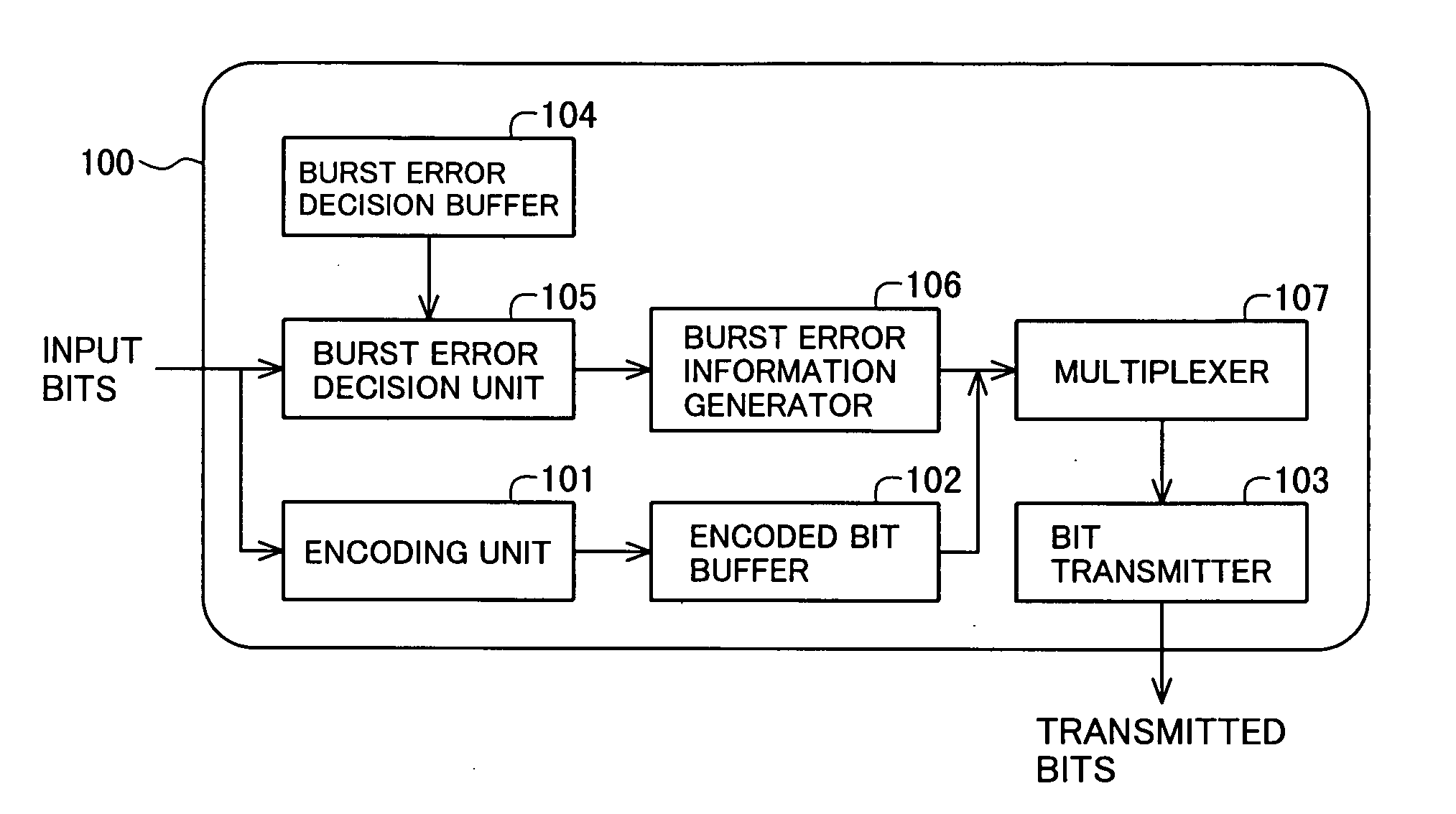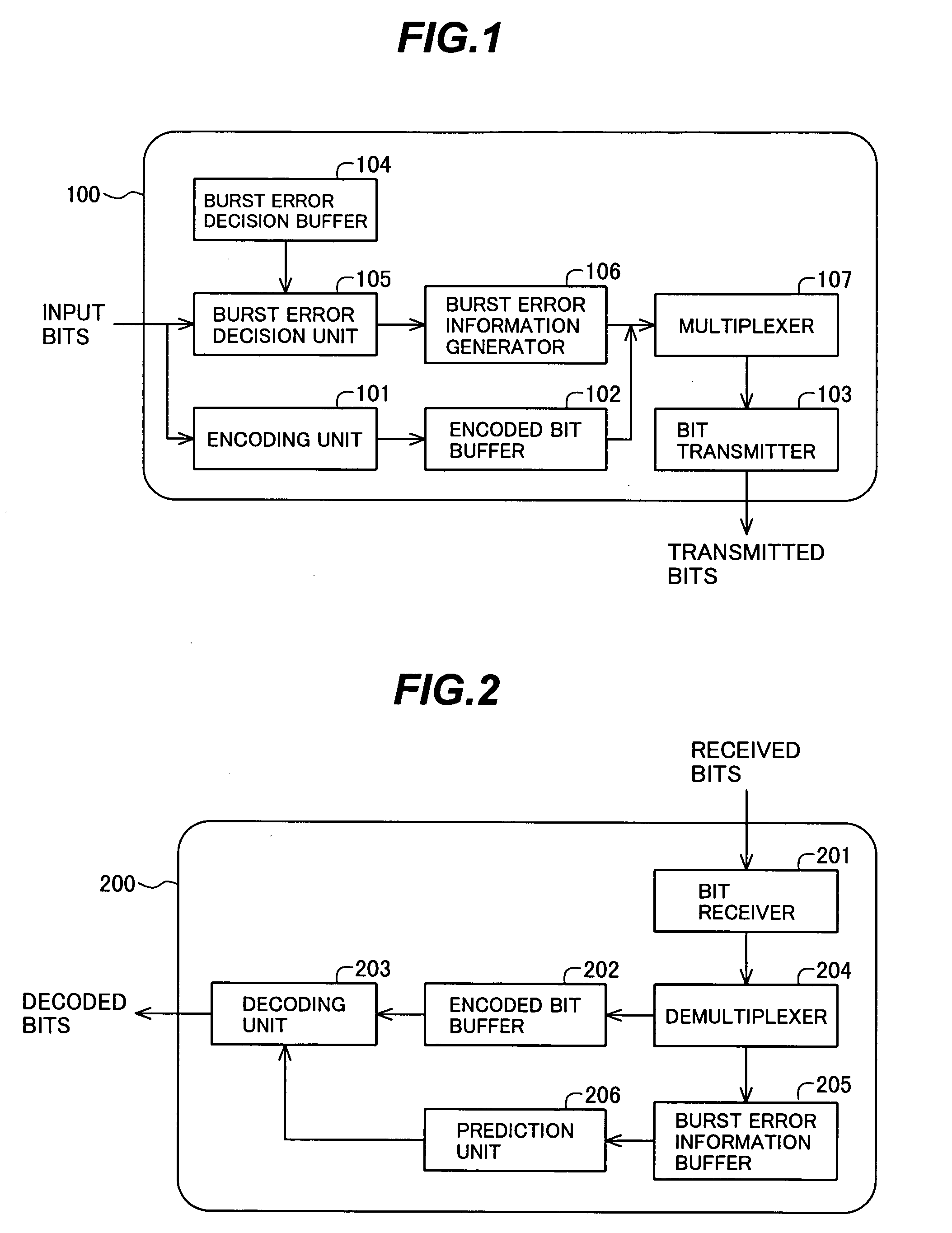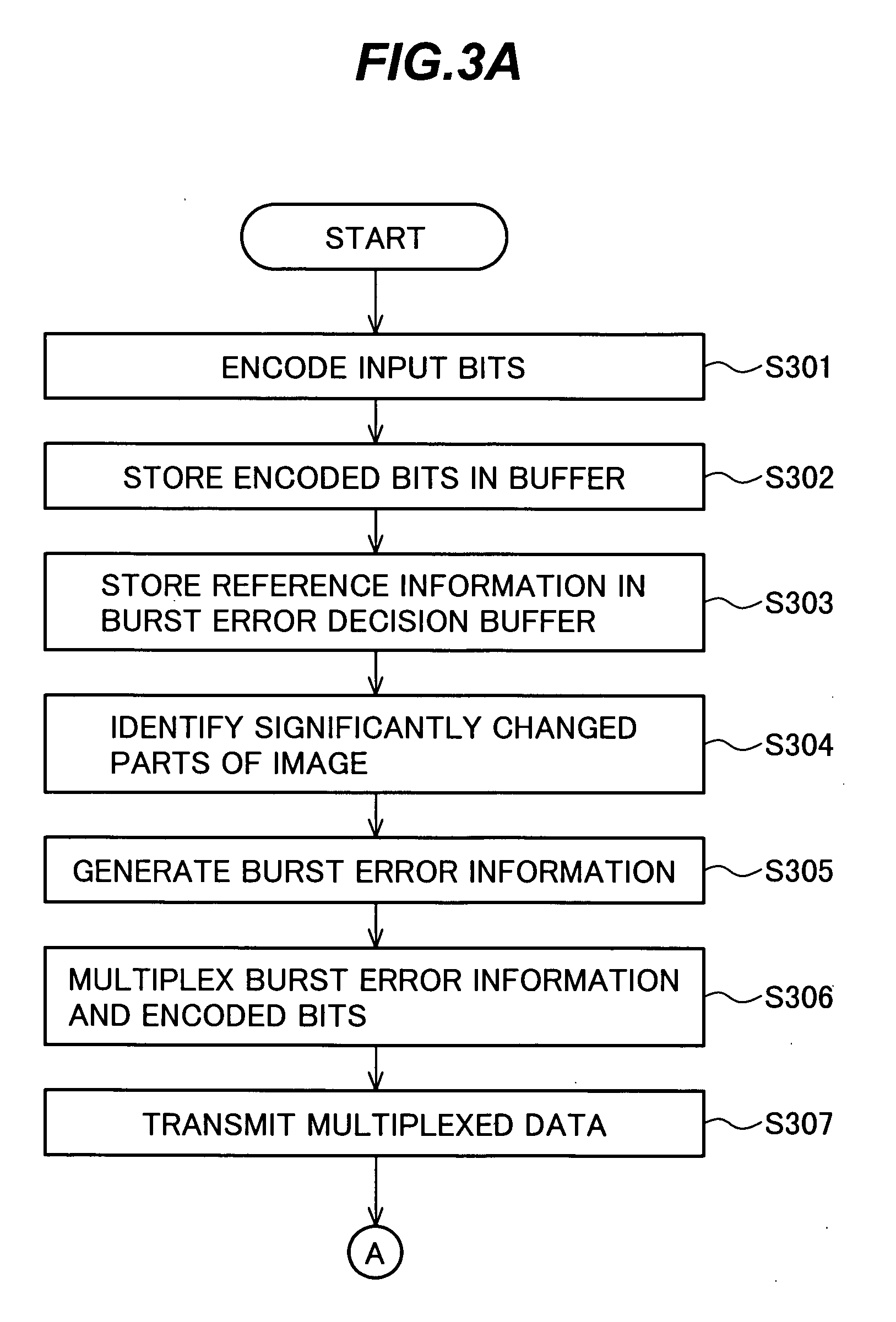Image encoder, image decoder, and image encoding system
- Summary
- Abstract
- Description
- Claims
- Application Information
AI Technical Summary
Benefits of technology
Problems solved by technology
Method used
Image
Examples
first embodiment
[0028]When a simple prediction process is used in distributed video coding, if part of an image to be encoded differs greatly from the reference image from which the image will be predicted in the decoder, the result is a burst of prediction errors in that part of the image. Since the effect on the decoding process is similar to the effect of a burst error in a communication channel, a part of the image that is significantly changed with respect to the reference image can be considered to have a type of ‘burst error’. This terminology does not imply that the image data are in error; it only means that the image data are hard to predict. The first embodiment detects such burst errors in the encoder, and compensates for them by putting extra computational effort into the prediction process in the decoder.
[0029]Referring to FIG. 1, the image encoder 100 in the first embodiment comprises an encoding unit 101, an encoded bit buffer 102, an output unit or bit transmitter 103, a burst erro...
second embodiment
[0063]Whereas motion compensation was used as an exemplary method of generating the predicted image data in the first embodiment, the second embodiment uses a simpler prediction method. For example, a preceding frame may be used without alteration as the predicted image, or the values in preceding and following frames may be arithmetically averaged to produce the predicted image.
[0064]Referring to FIG. 4, the image encoder 100 in the second embodiment includes a burst error decision unit 108 that differs from the burst error decision unit 105 in the first embodiment. The method by which the burst error information generator 108 identifies significantly changed parts of the input image will be described below.
[0065]Referring to FIG. 5, the image decoder 200 in the second embodiment includes a prediction unit 207 that differs from the prediction unit 206 in the first embodiment, and also includes a prediction revision unit 208.
[0066]The burst error information buffer 205 outputs some ...
third embodiment
[0084]The third embodiment is identical to the first embodiment with the added condition that a Slepian-Wolf coding method is used. That is, the burst error detection and prediction processing features of the first embodiment are added to a conventional Slepian-Wolf coding system. Since the third embodiment can be understood from the description of the first embodiment and a knowledge of conventional Slepian-Wolf coding, the description of the third embodiment will focus on a description of the conventional DVC coding system described by Aaron et al. in the reference cited above.
[0085]Referring to FIG. 7, in this conventional DVC coding system, some frames, referred to as key frames, are encoded and decoded by intraframe processing, while other frames, referred to as Wyner-Ziv frames, are encoded by intraframe processing and decoded by interframe processing. In the encoding process, a discrete cosine transform (DCT) is used to transform each Wyner-Ziv frame to the coefficient domain...
PUM
 Login to View More
Login to View More Abstract
Description
Claims
Application Information
 Login to View More
Login to View More - R&D
- Intellectual Property
- Life Sciences
- Materials
- Tech Scout
- Unparalleled Data Quality
- Higher Quality Content
- 60% Fewer Hallucinations
Browse by: Latest US Patents, China's latest patents, Technical Efficacy Thesaurus, Application Domain, Technology Topic, Popular Technical Reports.
© 2025 PatSnap. All rights reserved.Legal|Privacy policy|Modern Slavery Act Transparency Statement|Sitemap|About US| Contact US: help@patsnap.com



